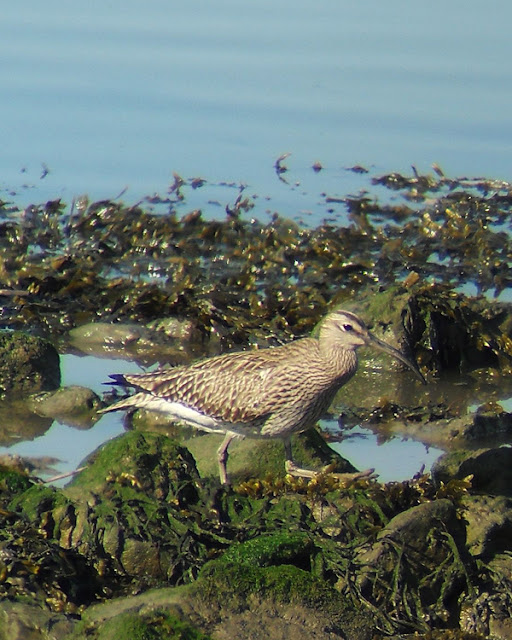It’s sunny! I can go birdwatching in a force 9 gale but when it’s sunny is better. A morning down at good old Rainham Marshes was the plan (no plan really). My routine is to walk along the Thames path to the landfill site and the wander back to the visitor centre and do a steady lap there.
The walk along the Thames path at 8:30am meant the sun was nicely behind me giving the best light and viewing conditions a man can get.
 |
| Rainham, a hotspot for Whimbrel this spring |
 |
| Oystercatcher |
The foreshore of the Thames had a single Whimbrel, a few Oystercatchers and a few small groups of Shelduck. Overhead, a party of Common Terns argued with each other other something or nothing. From here, I walked through Wheatear alley and not surprising in the least I saw a Wheatear. Fancy that.
 |
| Northern Wheatear |
In every clump of reed or dense vegetation, the random chattering of Reed Warblers – they sound as though they are talking to themselves – sounded out. They keep themselves pretty low down in the reeds and only a patient or lucky person will see one clearly. However I did happen upon one that hadn‘t read the script. It was a fair way away and obviously didn’t think anyone could see them.
 |
| Reed Warbler, not in reeds. |
Along the gorse bushes that edge the road to the landfill site, a smart male Stonechat popped up onto the fence. This was my first stonechat of the year and well worth the wait. There were Linnets, Goldfinches, Dunnocks and Whitethroats all singing their heads off – such a wonderful sound.
 |
| European Stonechat |
Across the marshes, a Marsh Harrier came under attack fro a mob of bullying Carrion Crows. I can’t understand why the harrier doesn’t just turn round and take them out? She has bloody talons for God’s sake and a beak that can rip the flesh off a small rabbit or pheasant so a crow or five
shouldn’t present much of a problem.
Once on the reserve, it was clear there were masses
of Reed Warblers setting up homes along with smaller numbers of Sedge Warblers.
Today there wasn’t any sign of Yellow Wagtails but up to four Hobbies performed
acrobatics in the sky as they fed on damselflies and other insects. the warm
weather had certainly woken flies in their thousands and many of these followed
me around all morning.
The recent heavy rain has affected the breeding of
many of the reserves wader populations. The Lapwings look a bit forlorn and the
chick from the previous week has disappeared. The Little Ringed Plovers have
also gone which is a real shame. Hopefully there’s still time for all these
species to have another brood, this time with more success.
 |
| Little Egret |
 |
| Lapwing |











Comments
Post a Comment